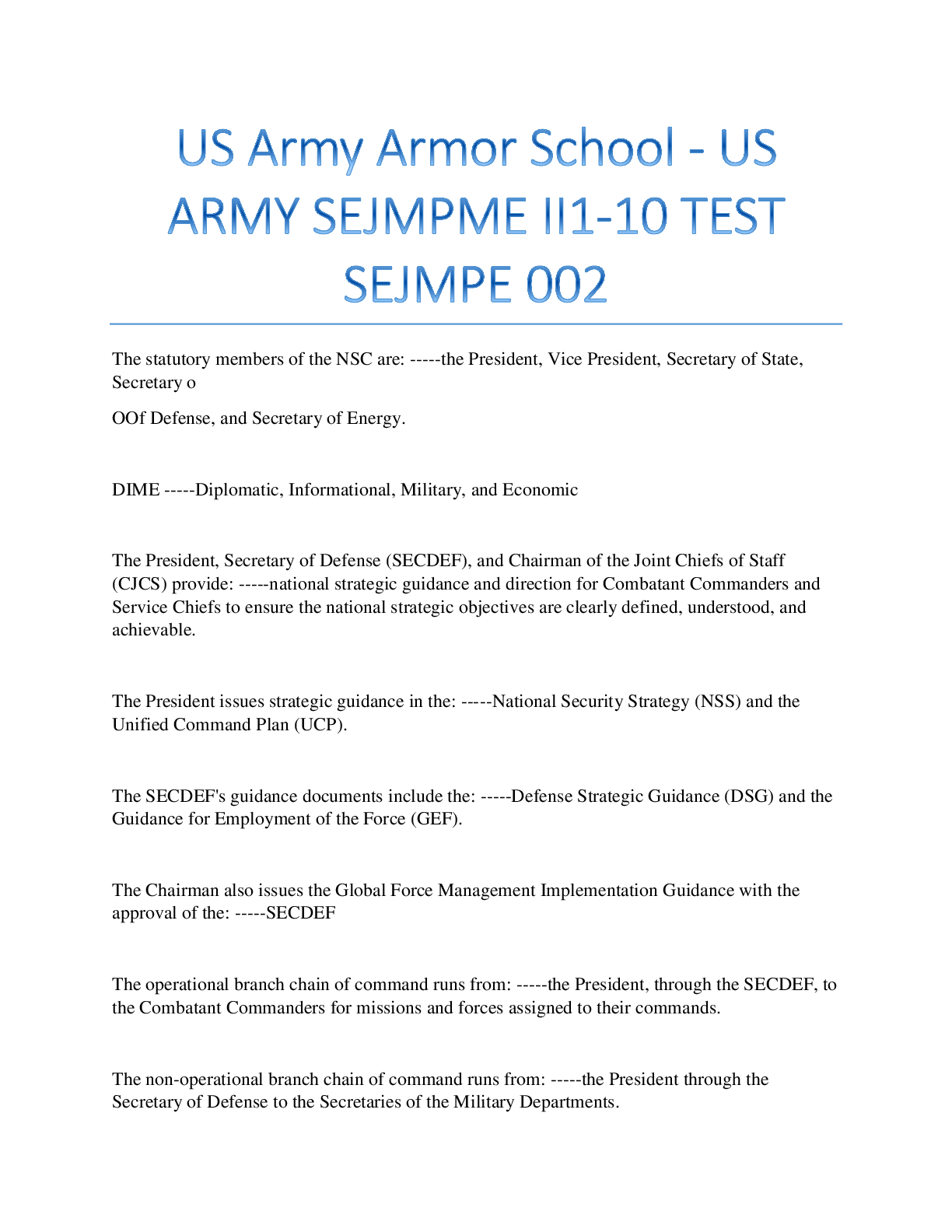Social Sciences > QUESTIONS & ANSWERS > Drug classes, LADC Exam Questions and answers, 100% accurate, rated A (All)
Drug classes, LADC Exam Questions and answers, 100% accurate, rated A
Document Content and Description Below
Drug classes, LADC Exam Questions and answers, 100% accurate, rated A Schedule 1 drugs - ✔✔-Highest potential for abuse, no therapeutic use, (Heroine marijuana LSD) ecstasy Schedule 11 drugs -... ✔✔-Drugs with high potential for abuse for us leading to severe psychological or physical dependence - Oxycodone (Percocet) - Hydrocodone (Vicodin) adderall, cocaine , meth , methadone Schedule III drugs - ✔✔-Less potential for abuse and currently accepted medical use, Tylenol with codeine , Schedule IV (C-IV) - ✔✔-Less abuse potential than schedule III and limited dependence liability (some sedatives, antianxiety agents, and nonnarcotic analgesics) Schedule V drugs - ✔✔-These drugs have less potential for abuse than schedule II, III, and IV drugs.example robitussin Norepinephrine - ✔✔-Neurotransmitter in the brain associated with arousal moods. It is excitatory GABA - ✔✔-Inhibitory neurotransmitter. When normal function of GABA are disrupted, convulsions can occur Cerebrum - ✔✔-Largest and most complex part of the brain. Contains billions of neurons and nerve centers. Lost Child - ✔✔-Usually the youngest child. The child's role is to cause no trouble for the family. They receive little positive or negative attention from the family. Gestalt Therapy - ✔✔-Fritz Perls. Goal of therapy is the integration of experiences into a whole personality. Stays in the here and now and focuses on body language. Motivational Interviewing - ✔✔-The direct, client centered counseling form implemented to elicit behavior change by helping clients resolve ambivalence to change. Extrinsic Motivator - ✔✔-A rationale for changing substance use that comes from outside the client Privilege - ✔✔-Legal term that refers to an individuals right not to have confidential information revealed in a court or other legal proceedings Opiates - ✔✔-naturally derived from poppies Medulla Oblongata - ✔✔-Part of the brain that connects to the spinal column. Controls vital centers including breathing, heart rate, and sleep/wake cycle. Hypothalamus - ✔✔-Maintains homeostasis. Controls heart rate, chemcial balance, hunger, body weight, GI tract, and sexual behavior. Transtheoretical Model of Change (TTM) - ✔✔-Stages of change process of change self-efficacy decisional balance Stages of Change - ✔✔-Pre-contemplation Contemplation Preparation Action Maintenance (Relapse) Parietal Lobes - ✔✔-Sensory areas responsible for temperature, touch, pressure, and skin pain LD50 - ✔✔-Lethal Dose 50. The Lethal dose it would take to kill 50% of those who took it. Frontal Lobes - ✔✔-Motor areas which control movements and voluntary skeletal muscles. Deals with higher intellectual processing, planning, and problem solving. 3 Classifications of Narcotics - ✔✔-Naturally occurring (opium, morphine, codeine) Semi-synthetics (Heroin, Hydromorphone) Synthetics (Methadone, Darvon) Advantages of Group Counseling - ✔✔-Sense of safety in numbers intense learning Expectation to be concerned about others Cost efficient Rational Recovery - ✔✔-Abstinence based Addictive Voice Recognition technique Recovery is simple No groups Morphine - ✔✔-Main alkaloid ingredient in opium with a purity of 4 to 21 percent. Occipital Lobe - ✔✔-Vision 3 Types of Sedative/Hypnotics - ✔✔-Barbiturates Minor Tranquilizers Other Sed/Hypnotics Threshold Dose - ✔✔-The smallest amount of a given drug which is capable of producing some detectable response Pons - ✔✔-Rounded bulge on the underside of the brain stem that connects medulla to mid-brain Enabler - ✔✔-Is assumed to be the person who is emotionally closest to the alcoholic, usually the spouse. Protects the alcoholic by making excuses, taking over responsibilities, rescuing the alcoholic from consequences. Temporal Lobes - ✔✔-Sensory areas responsible for hearing, visual memories, and language comprehension Duty to Warn - ✔✔-The legal obligation of a counselor to notify the appropriate authorities or victim when there is a serious danger Biopsychosocial Model - ✔✔-Multicausal model dealing with biology (disease/genetics), psychological, cultural norms/life events. Cerebellum - ✔✔-Reflex center responsible for coordinating muscle movements. Median effective dose - ✔✔-Dose required to produce a specific effect in 50 percent of test subjects Semi-synthetic Compounds - ✔✔-Hydromorphone (Dilaudid) or Oxycodone. Women and Alcohol - ✔✔-Women show "telescoping" response to alcohol and have often more severe consequences. Faster progression into dependency. Alcohol Assessment Tools - ✔✔-Addiction Severity Index (ASI) and Alcohol Use Disorders Identification test (AUDIT) Serotonin - ✔✔-Neurotransmitter associated with regulation of sensory perception, sleep, and body temperature. Neurons - ✔✔-Brain cells. Contain dendrites, nucleus, axon terminals. Codeine - ✔✔-Alkaloid found in opium, though most is morphine. Used as antitussive. Ground for breaching confidentiality - ✔✔-Harm to self or others child abuse elder abuse Installation of hope - ✔✔-Person must feel there is hope to solve problems Universality - ✔✔-The person must feel he or she has a problem common to others Imparting information - ✔✔-An informed person is better able to cope and think through new problems Altruism - ✔✔-Caring about others decreases unhealthy self-absorption Corrective recapitulation - ✔✔-Group helps abet family of origin issues and demonstrates healthier ways to behave Imitative behavior - ✔✔-The leaders and senior group members act as role models of healthy behavior for newer members Interpersonal Learning - ✔✔-Members receive feedback on how their behavior affects others Group Cohesiveness - ✔✔-When members feel a sense of togetherness, they are moer willing to attend, participate, help other members, and defend group rules Catharsis - ✔✔-Talking about difficulties is beneficial. Group members release intense emotions and open up opportunities to group. Existential Factors - ✔✔-Discovering that life can have meaning. Group member owns responsibility for own thoughts, feelings, and behaviors Etiological Models - ✔✔-Disease/medical model CBT model Biological Model Moral Model Psychodynamic Model Family Systems Model Biopsychosocial Model Addiction Severity Index - ✔✔-Developed by McLellan. Addresses 7 problem areas and is a one hour face to face interview. Disadvantages of group therapy - ✔✔-Each member receives less attention Group may scapegoat a member Counselor has less power/control Antagonistic effect - ✔✔-The effect of one drug blocks or reduces the effect of another drug or both drugs in the system Two by Four Programs - ✔✔-Two phase approach to treatment. Detox for two weeks followed by outpatient for two weeks 12 Core Functions (1) - ✔✔-Screening 12 Core Functions (2) - ✔✔-Intake 12 Core Functions (3) - ✔✔-Orientation 12 Core Functions (4) - ✔✔-Assessment 12 Core Functions (5) - ✔✔-Treatment planning 12 Core Functions (6) - ✔✔-Counseling 12 Core Functions (7) - ✔✔-Case Management 12 Core Functions (8) - ✔✔-Crisis Intervention 12 Core Functions (9) - ✔✔-Patient Education 12 Core Functions (10) - ✔✔-Referral 12 Core Functions (11) - ✔✔-Report and Record Keeping 12 Core Functions (12) - ✔✔-Consultation Neuroplasticity - ✔✔-Ability for the brain to repair, replace, and retrain it's neural circuitry. SOS - ✔✔-Secular Organization for Sobriety. Alternative recovery method for those alcoholics uncomfortable with spiritual content of 12 step programs. Additive Effect - ✔✔-When two or more drugs are present in the body that have similar effects, the impact of adding one drug to the others doubles the efforts of the drugs. Supportive Groups for Families - ✔✔-Al-anon Alateen ACOA Nar-Anon Harrison Act - ✔✔-Taxation act of 1914 that taxed opium and coca products Dopamine - ✔✔-Neuotransmitter linked to pleasure, reward, and motivation. Thalamus - ✔✔-Determines sensations as painful vs pleasurable. Sensory and motor signal relay that regulates consciousness and sleep. 42 CFR - ✔✔-The regulations directing the implementation of confidentiality of alcohol and drug abuse patients The Hero - ✔✔-Usually the oldest child. Provides self-worth to the family. Knows something is wrong and feels obligated to fix the problem through achievement. Controlled Substance Act - ✔✔-1970's Act that classified drugs according to medical use, potential for abuse, and possibility of dependence The Scapegoat - ✔✔-Usually the second child. Since the hero has the positive attention, the second child seeks what is left: negative attention. the child's role is to take attention away from the alcoholic by accepting blame for the family's troubles. Transference - ✔✔-The unconscious redirection of emotions from one person to another Independent effect - ✔✔-The effect of individual drug is not changed when combined with another drug. Neither drug affects the other. Elements of a Treatment Plan - ✔✔-identify problems List goals and objectives Resources to be applied person responsible for actions Time frame Expected benefits Alcoholism - ✔✔-A primary, chronic disease with genetic, psychosocial, and environmental factors influencing it's development and manifestations. the disease is often progressive and fatal. It is characterized by impaired control, preoccupation, use despite consequences, and distortions in thinking. Acetylcholine - ✔✔-An excitatory neurotransmitter released by axons. Glycine - ✔✔-Inhibitory neurotransmitter found in the spinal cord. Cognitive therapy - ✔✔-Founded by Aaron Beck. Uses open-ended questions and Socratic dialogue. Pure Food and Drug Act - ✔✔-Passed in 1906, the act attempted to control addictions by requiring companies to label the drugs contained in their products (morphine, heroin, cociane) 3 stages of Alcohol and Drug Counseling - ✔✔-Medical (physical intervention) Psychosocial rehabilitation Aftercare Minnesota Model - ✔✔-A state hospital in Minnesota that used the 12 steps in the treatment setting. Typical length of stay was 60 days. Level of care happened all within the same system. Synergistic effect - ✔✔-Combination of two or more drugs that produce an exaggerated effect. Goes above and beyond what might be expected of adding one drug to another. Systems Theory - ✔✔-View of behavior as an interactive part of a larger social structure. SMART Recovery - ✔✔-Started in 1992. Recovery program that looks as addiction as behavioral. 4 Point program: Enhance motivation to abstai [Show More]
Last updated: 1 year ago
Preview 1 out of 20 pages
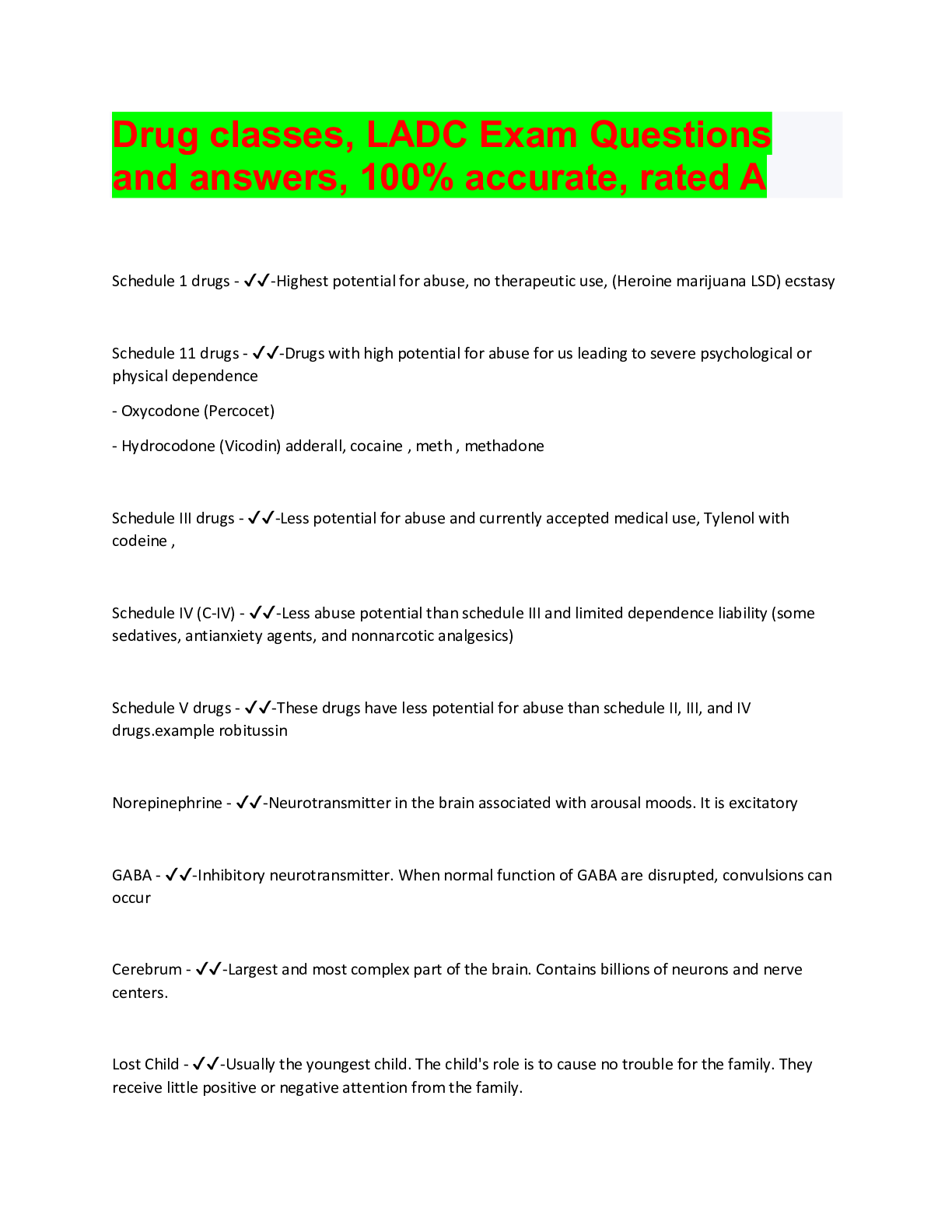
Also available in bundle (1)

Final LADC EXAM BUNDLE, QUESTIONS & ANSWERS
Final LADC, top Exam Questions with accurate answers, 100% AcCurate. Rated A. APPROVED.
By Topmark 1 year ago
$35
10
Reviews( 0 )
Document information
Connected school, study & course
About the document
Uploaded On
Mar 14, 2023
Number of pages
20
Written in
Additional information
This document has been written for:
Uploaded
Mar 14, 2023
Downloads
0
Views
69






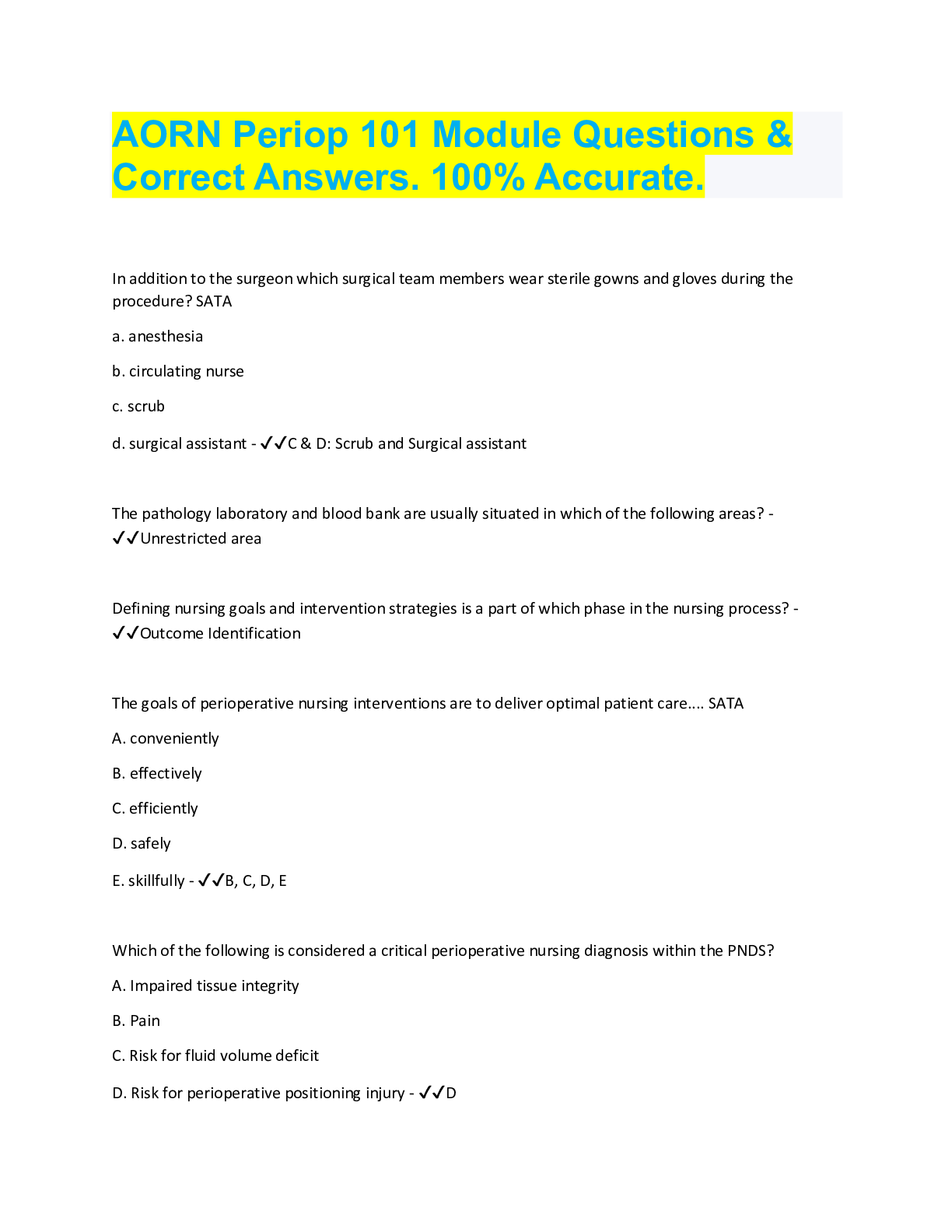





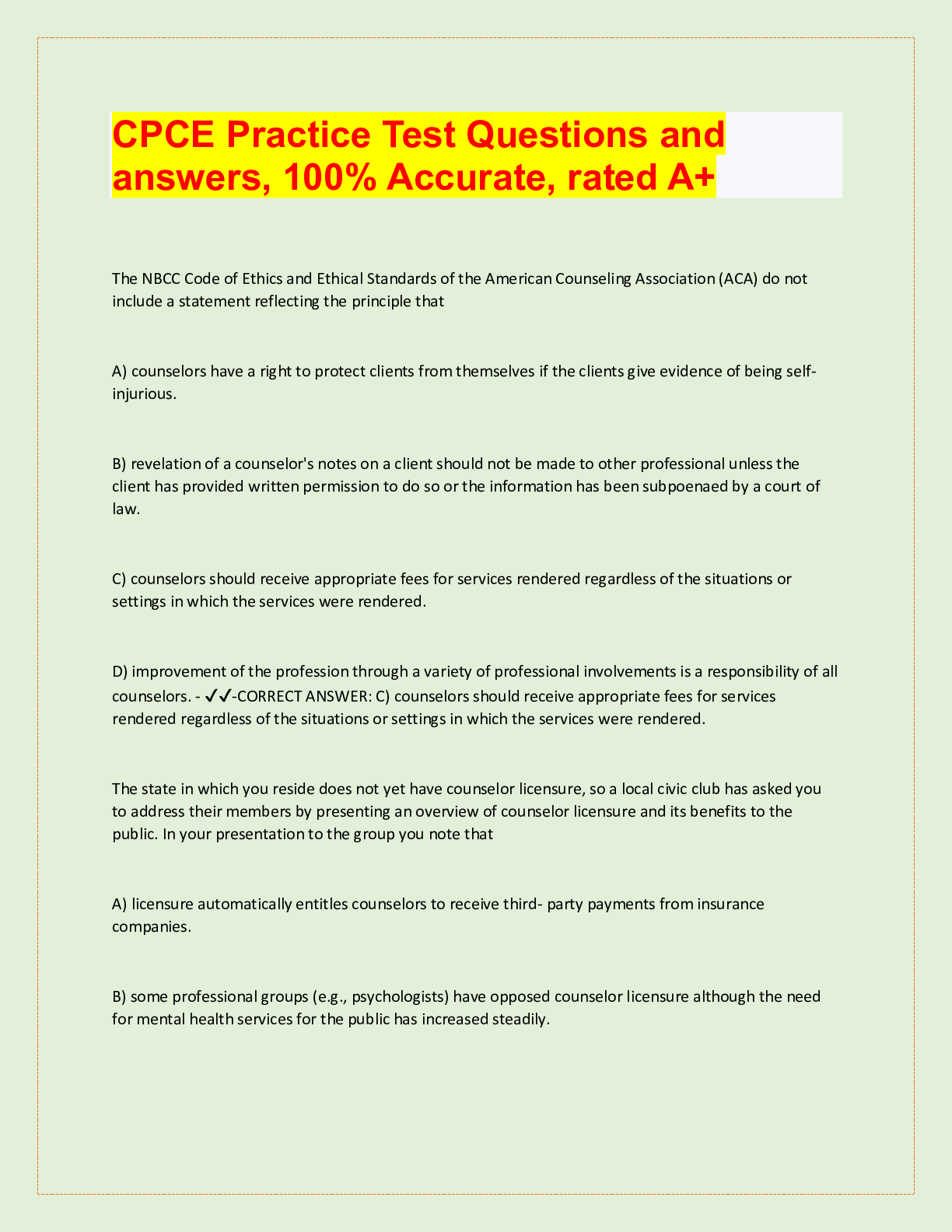


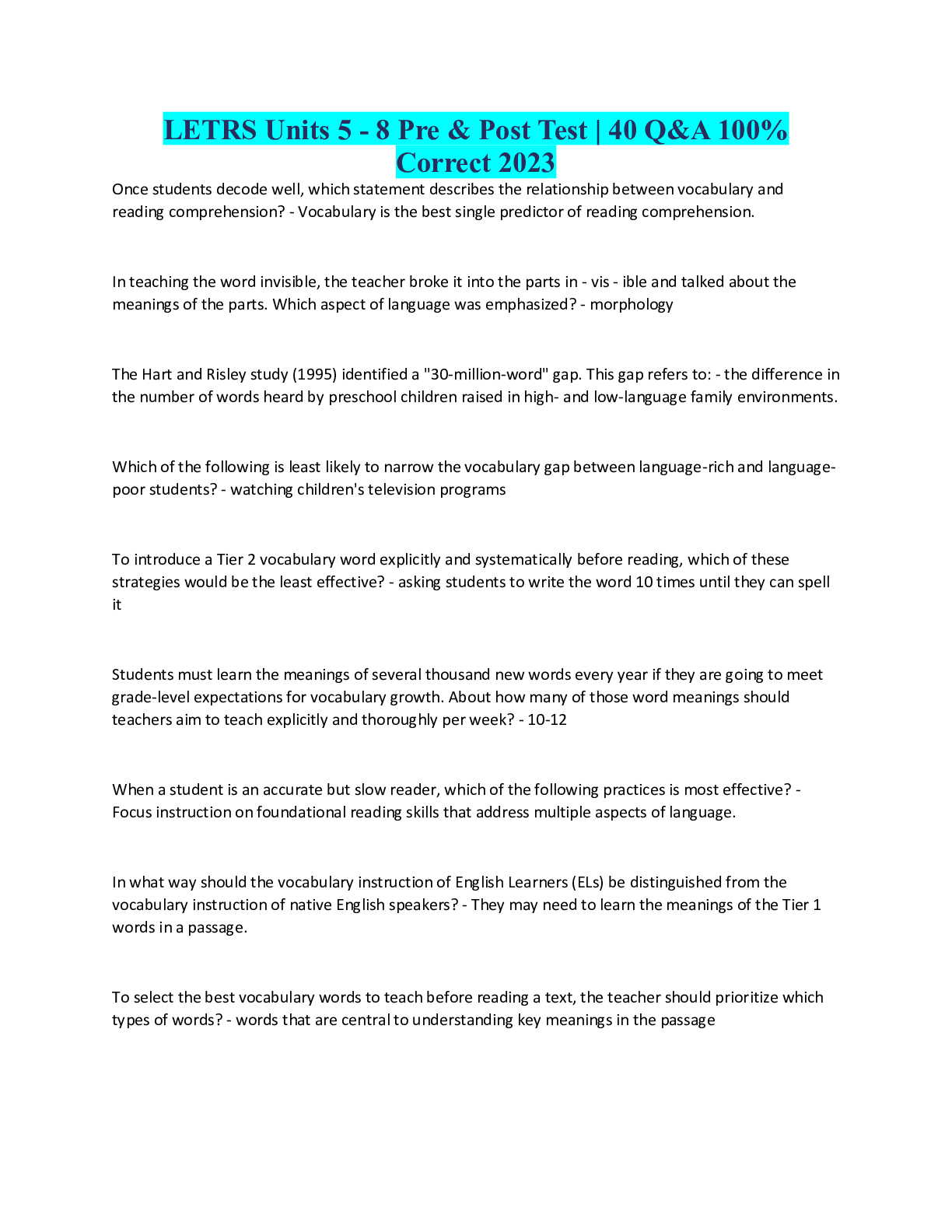
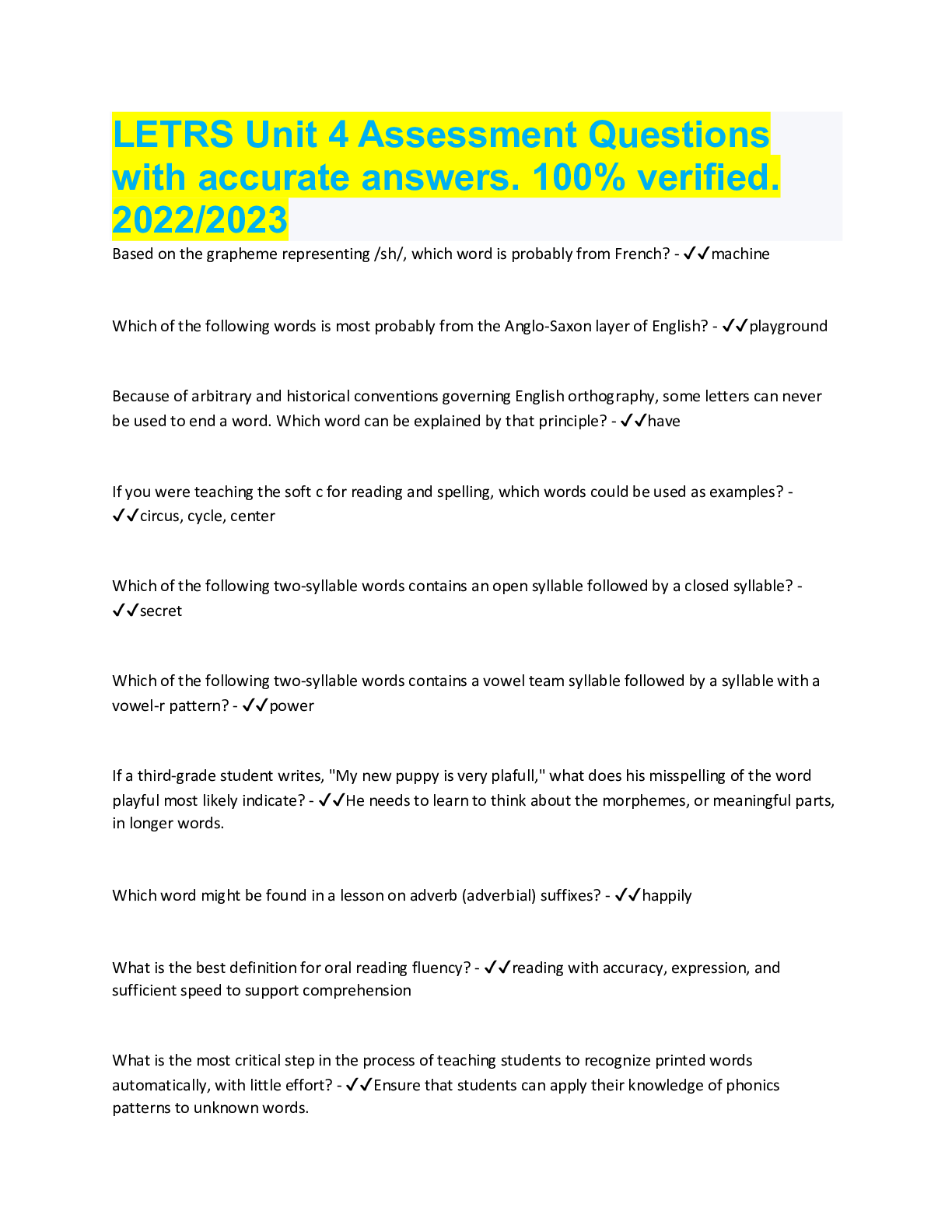




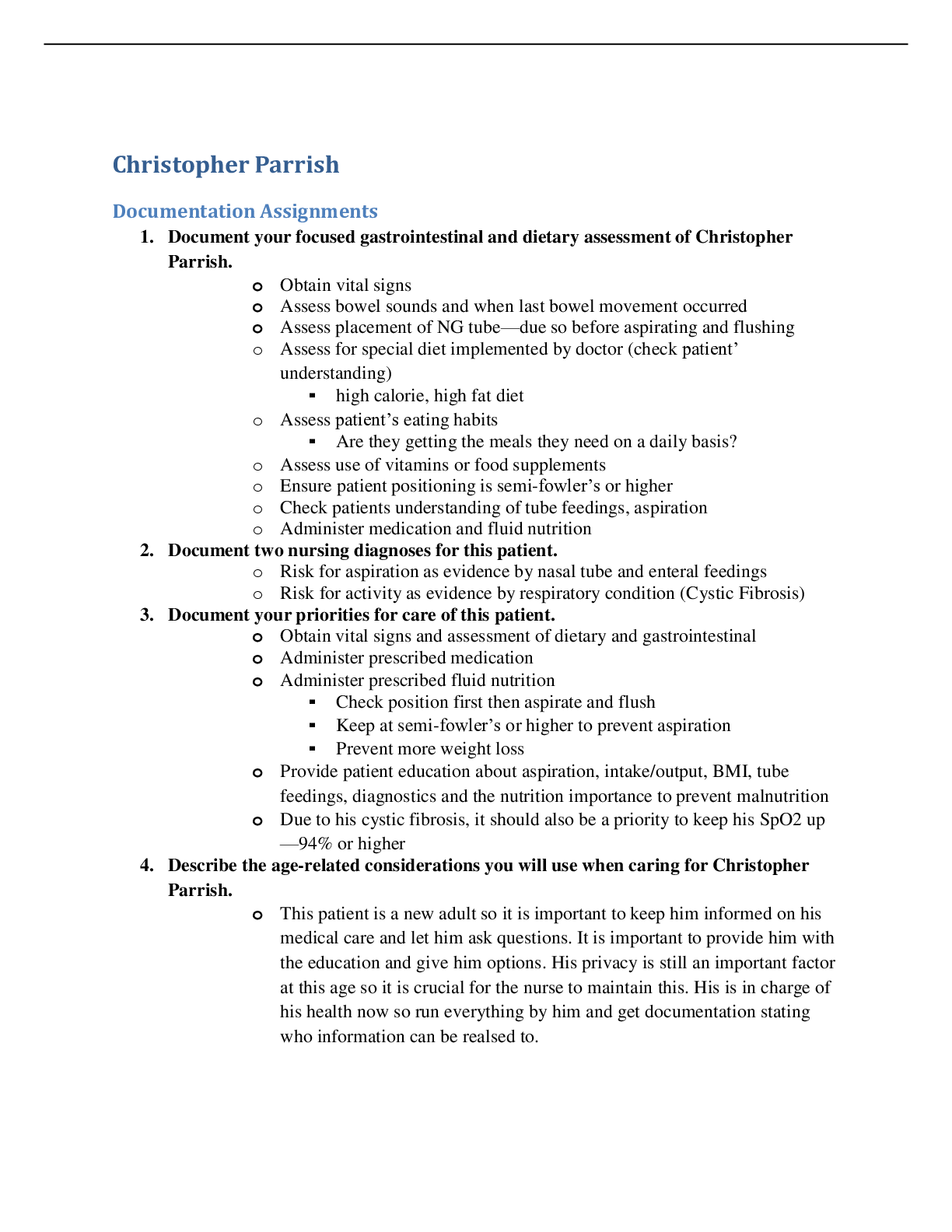
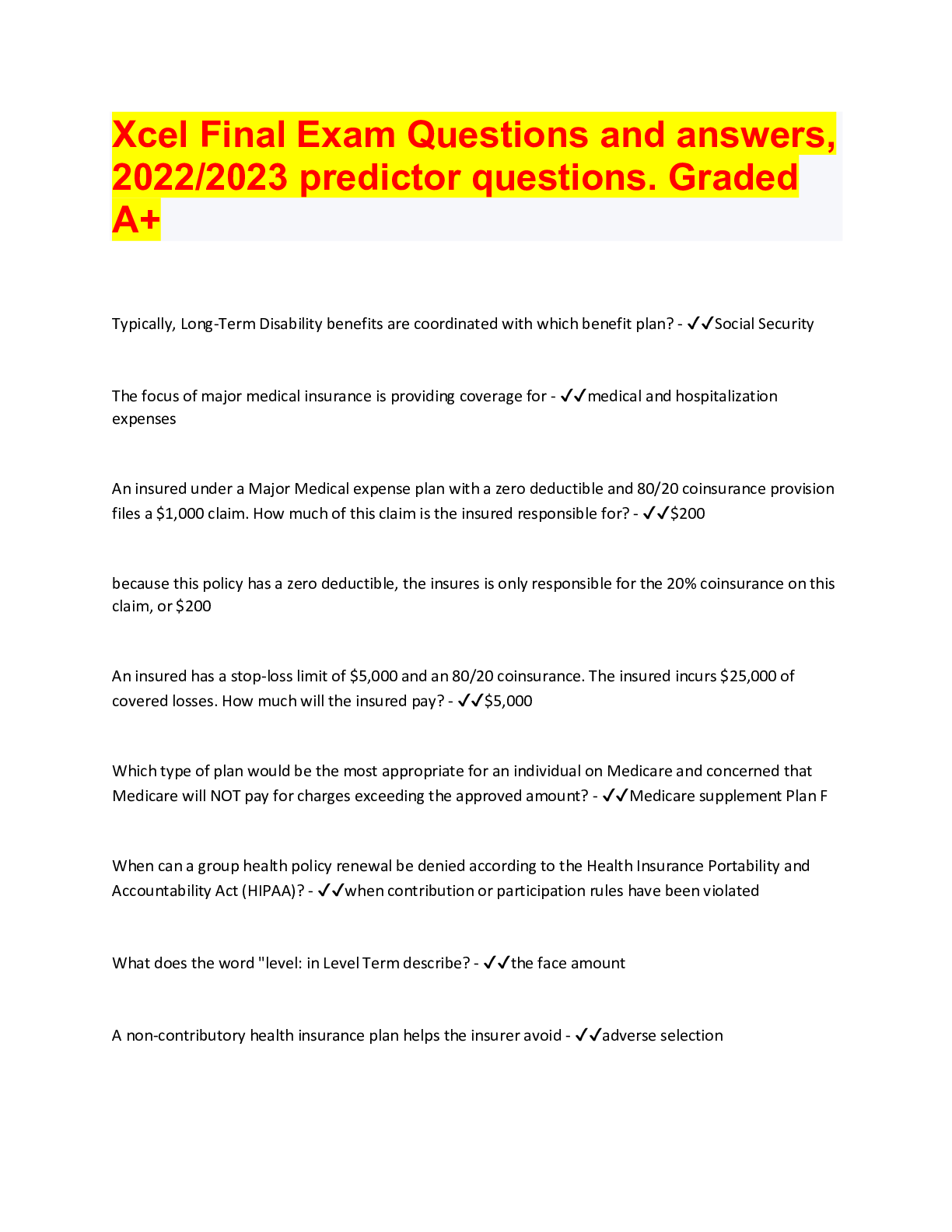
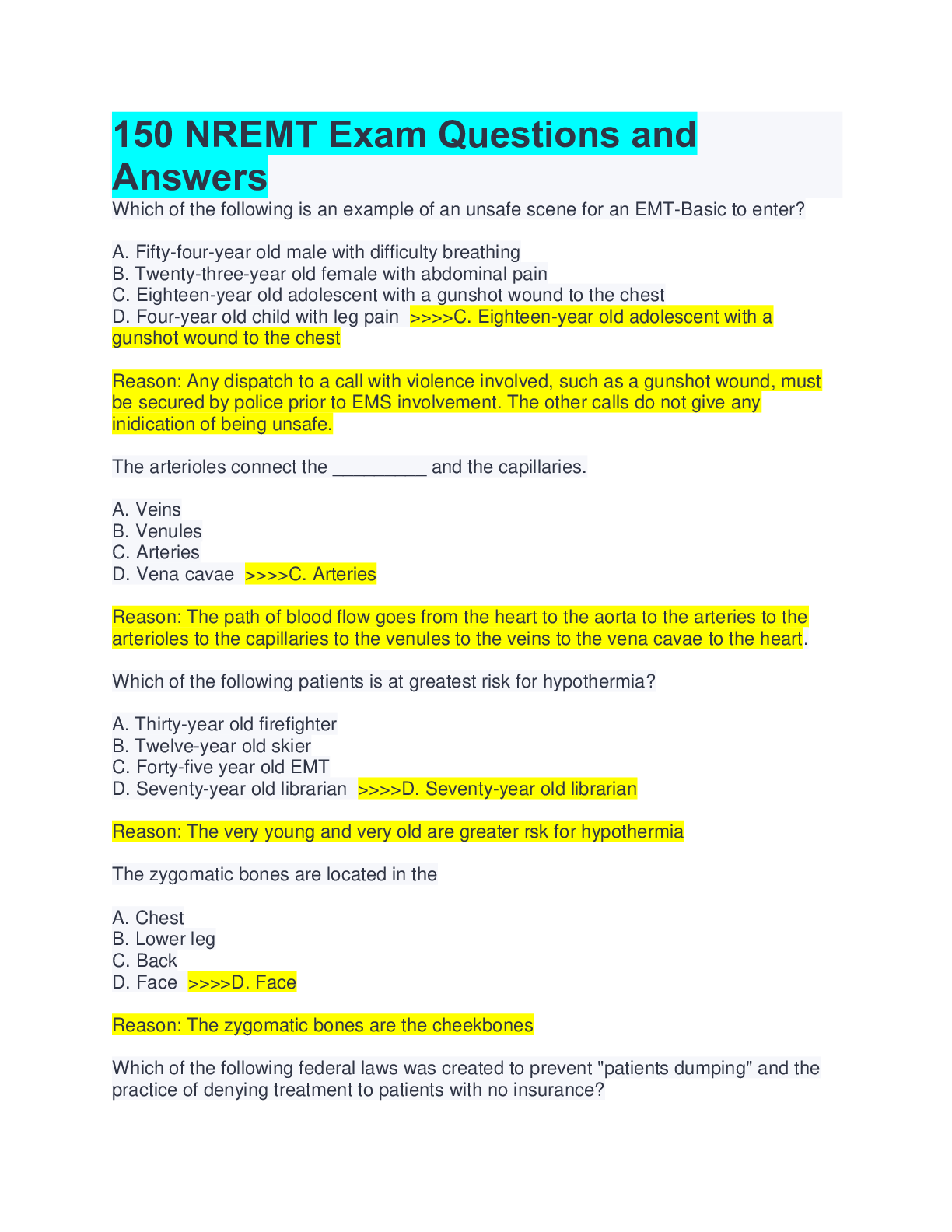


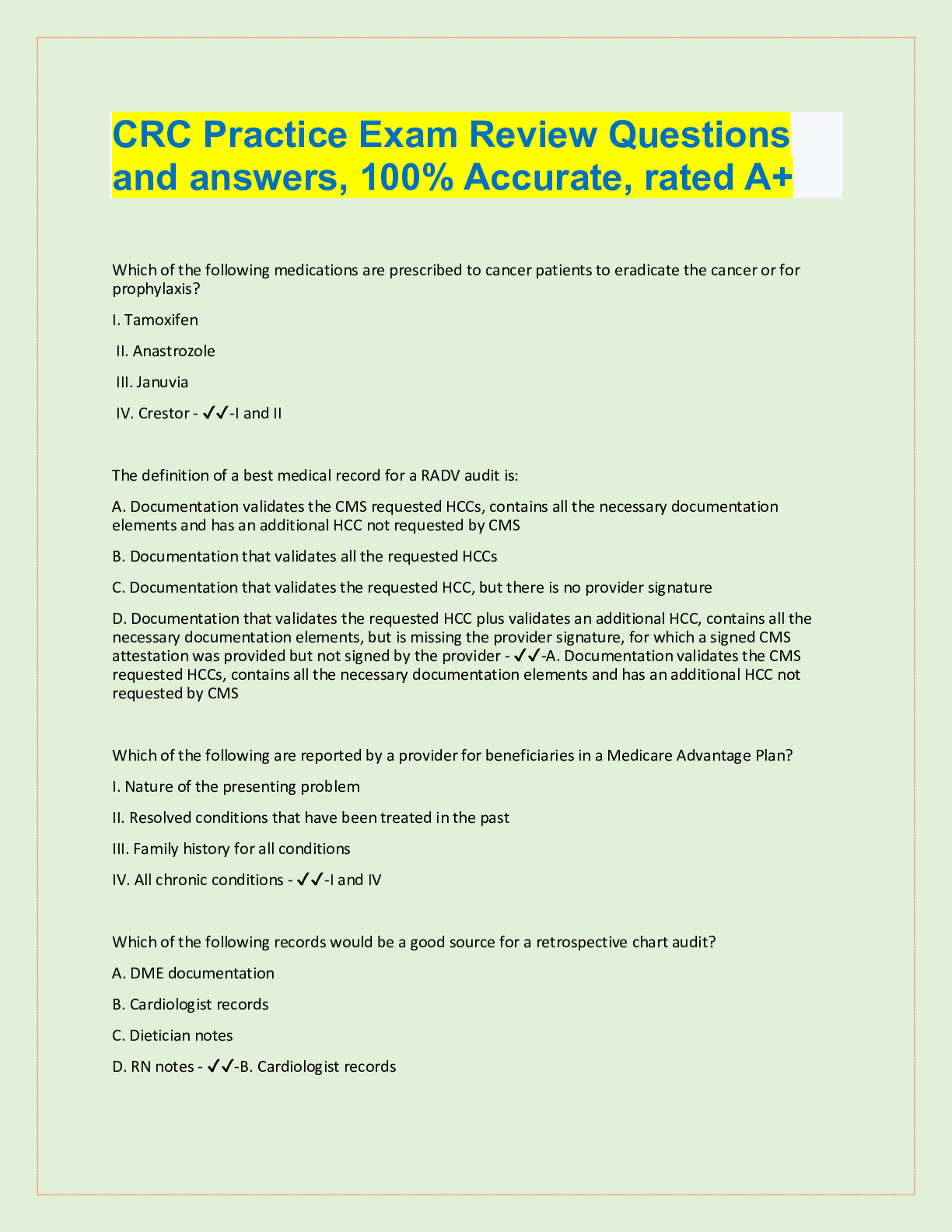
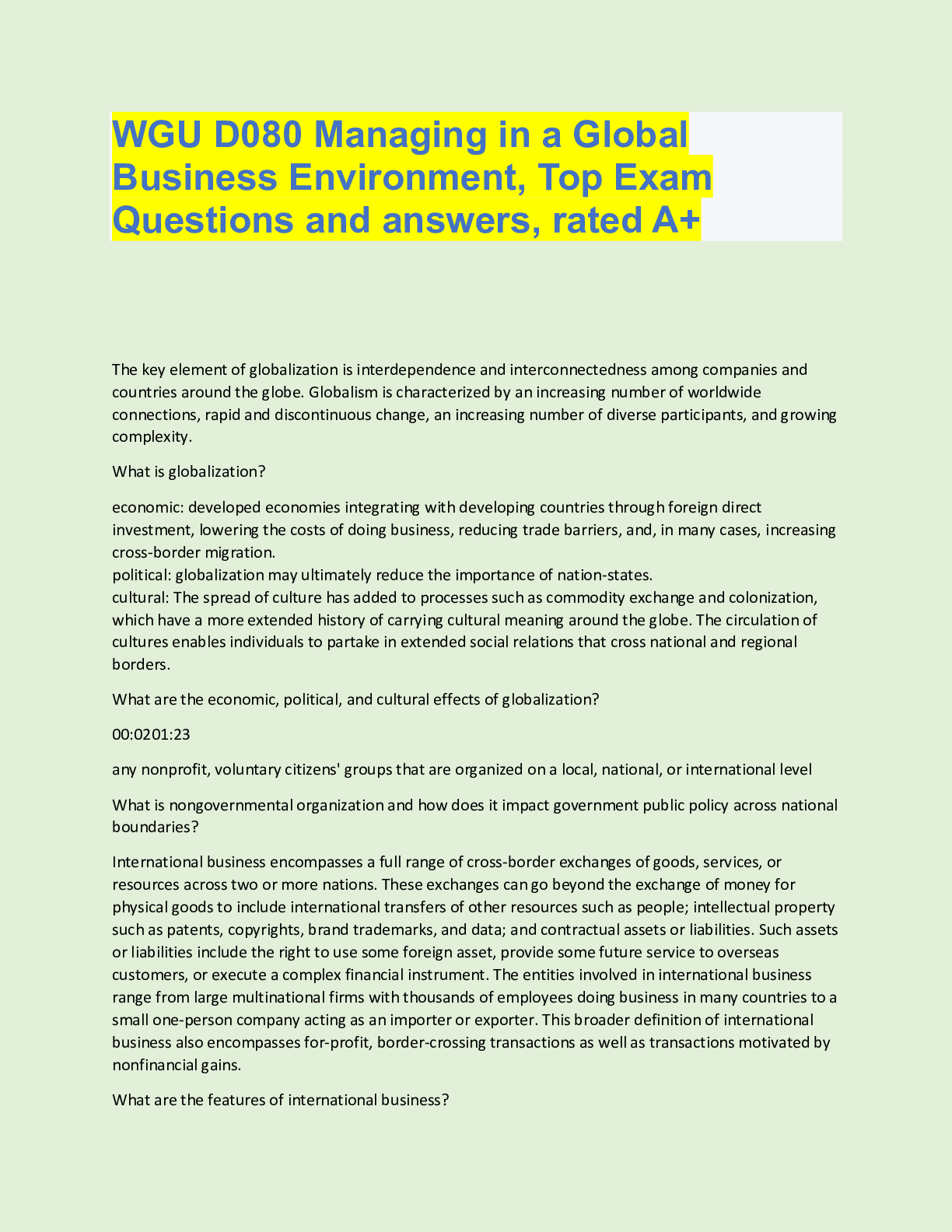
, (A Grade), Questions and Answers, All Correct Study Guide, Download to Score A.png)
, Questions and Answers, All Correct Study Guide, Download to Score A.png)
